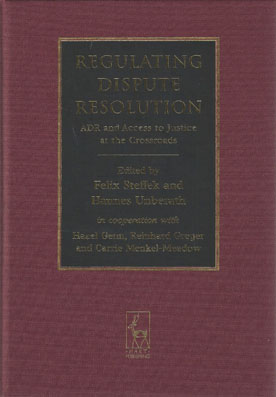
This book proposes a principled approach to the regulation of dispute resolution. It covers dispute resolution mechanisms in all their varieties, including negotiation, mediation, conciliation, expert opinion, mini-trial, ombud procedures, arbitration and court adjudication.
The authors present a transnational Guide for Regulating Dispute Resolution (GRDR). The regulatory principles contained in this Guide are based on a functional taxonomy of dispute resolution mechanisms, an open normative framework and a modular structure of regulatory topics.
The Guide for Regulating Dispute Resolution is formulated and commented upon in a concise manner to assist legislators, policy-makers, professional associations, practitioners and academics in thinking about what solutions best suit local and regional circumstances.
The aim of this book is to contribute to the understanding and development of the legal framework governing national and international dispute resolution. Theory, empirical research and regulatory models have been taken from the wealth of experience in 12 jurisdictions: Austria, Belgium, Denmark, England and Wales, France, Germany, Italy, Japan, the Netherlands, Norway, Switzerland and the United States of America.
Experts with a background in academia, practice and law-making describe and analyse the regulatory framework and social reality of dispute resolution in these countries. On this basis the authors draw conclusions regarding policy choices, regulatory strategies and the practice of conflict resolution.